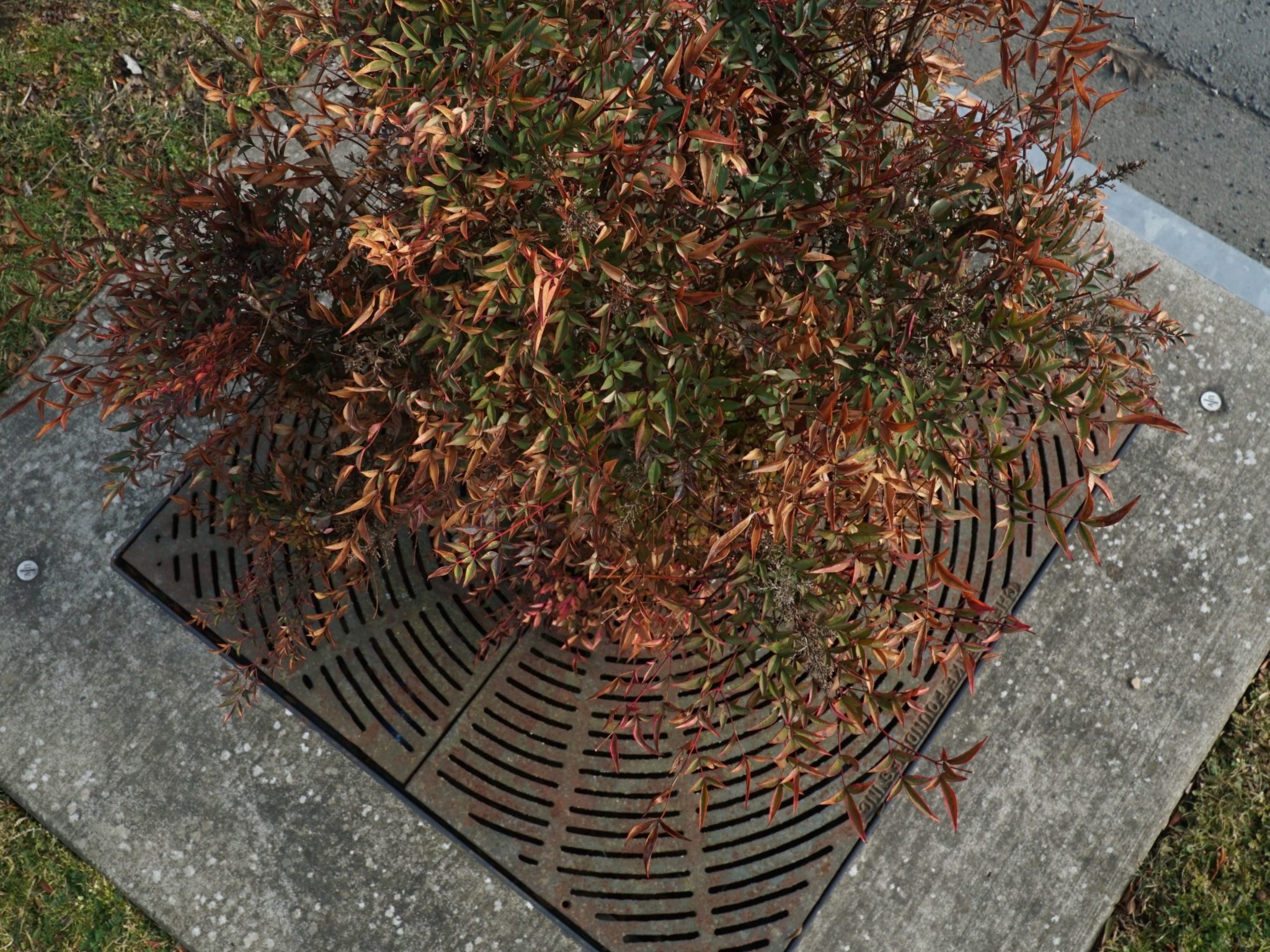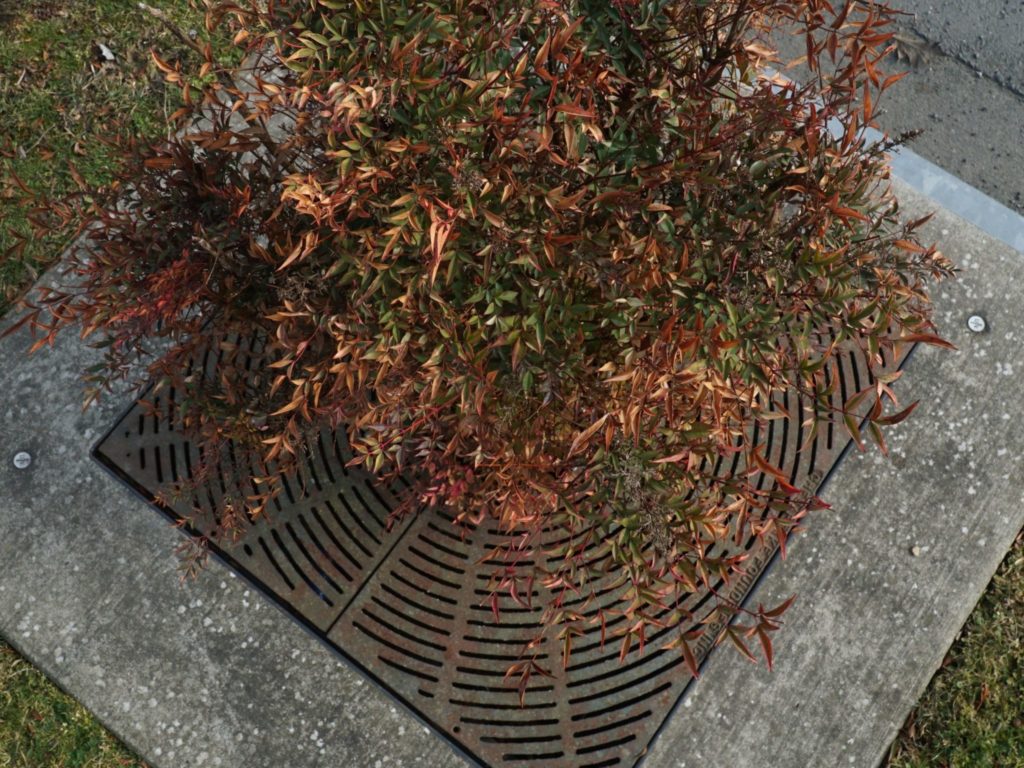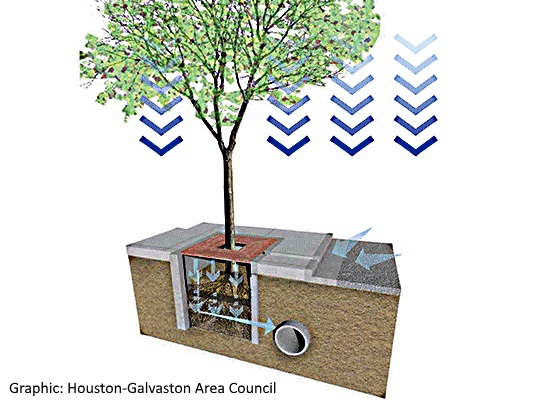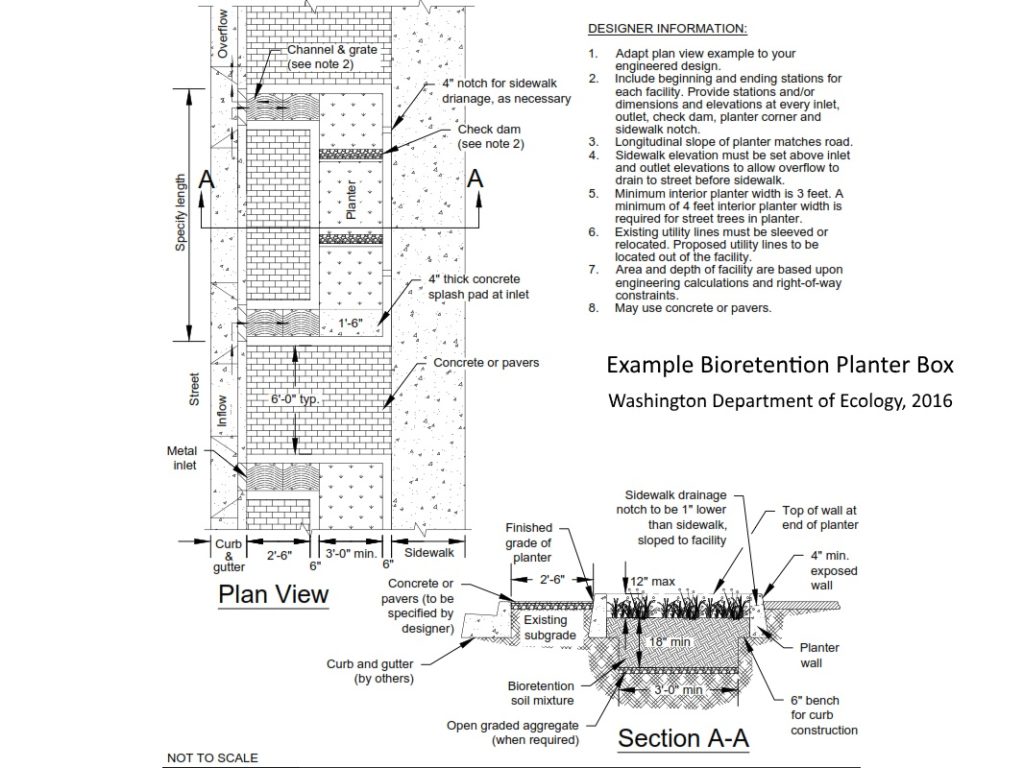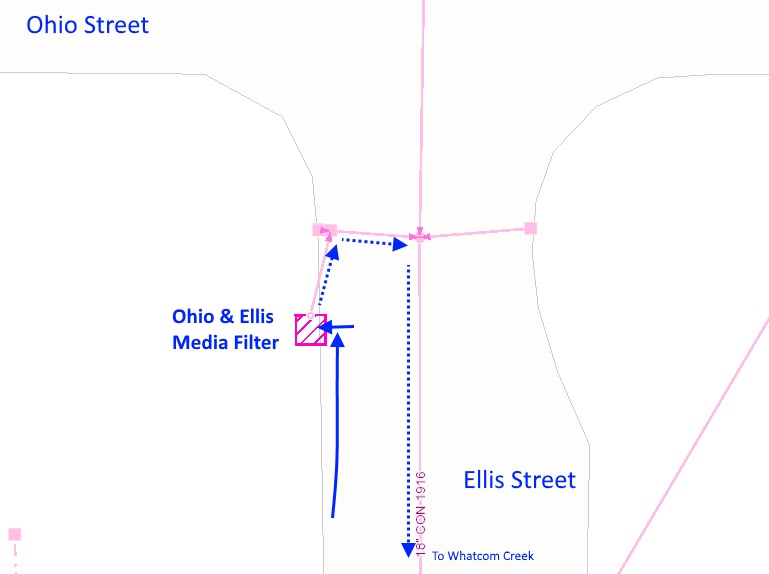Where is this located? It is near the corner of Ohio and Ellis Street. Look under the shrub near the corner.
What’s special about this place? Designed to mimic natural processes, bioretention basins like this one are easily adapted to urban areas. The street trees create shade and beauty along the way as well as consume stormwater runoff. With a small footprint, they are a cost-effective way to address stormwater in highly urbanized areas.
image gallery
select any photo to see a slideshow
